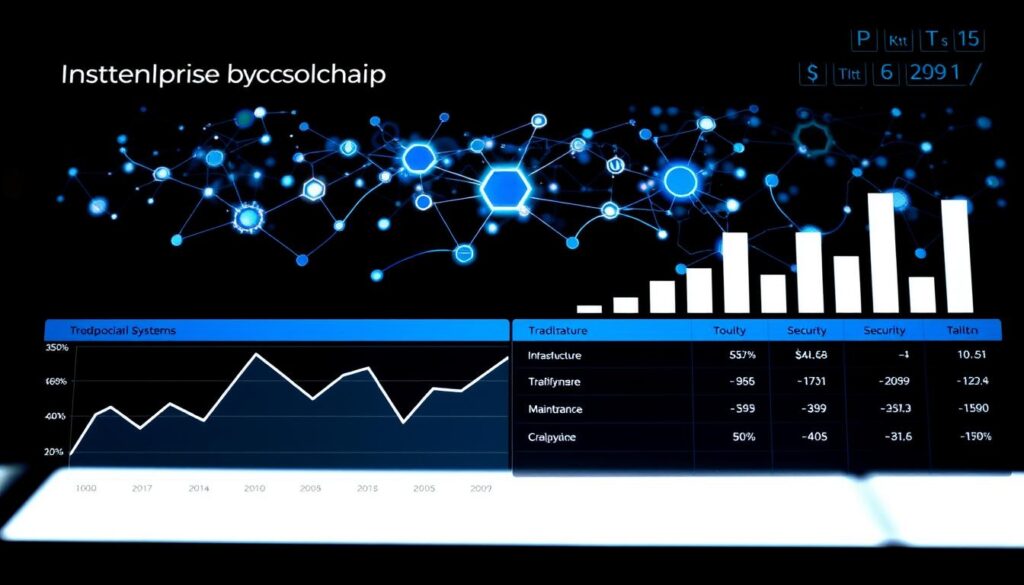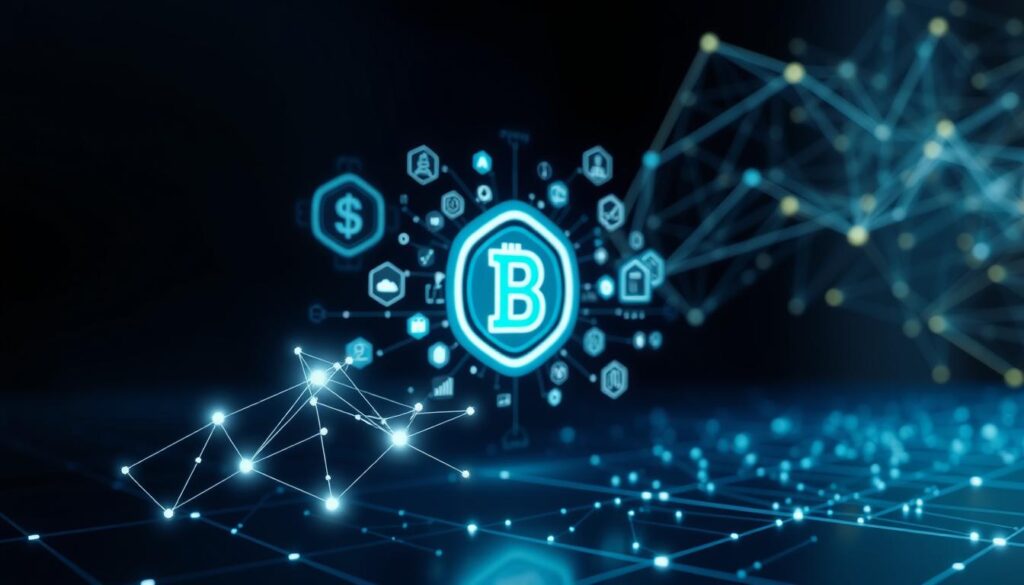Now Reading: DeFi Protocol Risks: A Comprehensive Guide to Threats
- 01
DeFi Protocol Risks: A Comprehensive Guide to Threats
DeFi Protocol Risks: A Comprehensive Guide to Threats

Decentralized finance has transformed how people interact with money. By leveraging blockchain technology, these systems enable peer-to-peer transactions without banks or brokers. The sector’s growth is staggering, with over $129 billion locked in platforms globally as of early 2025.
This rapid expansion brings both opportunities and challenges. Unlike traditional finance, decentralized systems operate without centralized oversight, creating unique exposure points. Smart contract flaws, hacking attempts, and shifting regulations rank among the most pressing concerns for participants.
Understanding these challenges isn’t just optional—it’s critical for anyone involved. Investors, developers, and everyday users must stay informed to protect their assets. A detailed risk management strategy can help identify weak spots before they lead to losses.
This guide breaks down the complexities of safeguarding digital assets. We’ll explore common pitfalls, analyze real-world examples, and provide actionable steps to mitigate exposure. Knowledge remains the best defense in this fast-paced financial frontier.
Key Takeaways
- Decentralized finance platforms hold over $129 billion in assets globally
- Smart contract errors remain a top security concern for blockchain-based systems
- Regulatory changes could significantly impact how these platforms operate
- Proactive security measures help reduce vulnerability to cyberattacks
- Comprehensive insurance options exist for digital asset protection
Understanding the World of Decentralized Finance
Blockchain technology has created new ways to manage money through peer-to-peer networks. These systems let people exchange value, earn interest, and access services without traditional gatekeepers. At their core, they replace banks with code-driven solutions visible to everyone.

What Is This New Financial Model?
Imagine financial tools that operate 24/7 through automated agreements. Decentralized finance platforms use blockchain to handle loans, trades, and savings. Built primarily on Ethereum, these systems let users interact directly through digital wallets.
Why People Choose This Approach
Three main advantages drive adoption:
- Borderless access: Anyone with internet can participate
- Transparent operations: All transactions appear on public ledgers
- Innovative products: Features like yield farming don’t exist in traditional banks
However, challenges persist. Technical jargon confuses newcomers, and network congestion sometimes slows transactions. Users must learn to verify contracts and manage digital wallets securely—skills most people never needed before.
Core Components of DeFi and Their Functions
Automated agreements form the backbone of modern blockchain-based financial systems. Three elements work together to enable transparent transactions: self-executing code, external information feeds, and community-driven decision-making.
Role of Smart Contracts
Smart contracts act as digital rulebooks that automatically enforce terms. These programs handle everything from crypto loans to token swaps without human oversight. Common applications include:
- Collateral management for borrowing platforms
- Interest rate calculations in savings tools
- Automated trading through decentralized exchanges

Flaws in contract design can lead to fund losses, making thorough code reviews essential. Developers must build these systems with multiple security layers to prevent exploits.
Importance of Oracles and Governance
Oracles bridge blockchain networks with real-world information. They supply critical data like stock prices or weather reports to trigger contract actions. Reliable oracle networks use multiple sources to ensure accuracy.
Community governance gives users control through voting tokens. Holders can:
- Propose system upgrades
- Adjust fee structures
- Allocate development funds
This decentralized approach creates challenges in coordinating large groups. Balancing speed with thorough decision-making remains an ongoing design consideration for blockchain platforms.
Exploring DeFi protocol risks: Key Threats and Vulnerabilities
Digital asset platforms face unique security challenges that traditional systems never encountered. Complex code structures and open-source nature create multiple entry points for exploitation. Three critical issues dominate this landscape: flawed automated agreements, manipulated lending mechanisms, and fraudulent exit strategies.

Smart Contract Vulnerabilities
Automated agreements power most blockchain transactions but carry hidden dangers. Coding errors in these systems can let attackers drain millions in seconds. Common weaknesses include:
- Reentrancy flaws letting hackers withdraw funds repeatedly
- Math errors causing incorrect balance calculations
- Improper permission settings allowing unauthorized access
The 2021 Poly Network incident showed how one coding mistake could enable $610 million theft. Regular audits help, but new threats emerge faster than fixes.
Flash Loan Attacks and Rug Pulls
Attackers exploit lending features to manipulate prices across platforms. They borrow huge sums without collateral, distort trading values, then pocket differences. In 2023, such schemes drained over $300 million from liquidity pools.
Rug pulls occur when developers abandon projects after collecting investments. They remove pooled assets, causing token values to crash. Over 80% of new token projects reportedly show signs of potential exit scams.
Deep Dive into Smart Contract Vulnerabilities
Self-executing code powers modern financial tools but hides critical weaknesses beneath its efficiency. Flaws in these systems can lead to catastrophic losses, making technical awareness essential for users and developers alike.
Common Coding Flaws
Reentrancy attacks remain one of the most dangerous exploits. Attackers drain funds by repeatedly calling withdrawal functions before balance updates. The 2016 DAO hack stole $60 million using this method, reshaping how developers approach Ethereum smart contracts.
Other critical issues include:
- Integer overflows creating false balance calculations
- Missing permission checks allowing unauthorized actions
- Time-based logic vulnerable to miner manipulation
One coding error in 2022 let attackers mint unlimited tokens on a major platform. The incident drained $320 million in 7 hours before being halted.
The Importance of Code Audits
Professional audits combine automated scanners with human expertise to catch hidden flaws. Top firms use three methods:
- Static analysis to review code structure
- Scenario testing for edge cases
- Formal verification matching code to specifications
Audited systems show 76% fewer exploits according to 2024 blockchain security reports. However, only 41% of new projects undergo full audits before launch.
Users should verify audit certificates and check for recurring checks. Multi-stage reviews catch 93% more vulnerabilities than single examinations. Continuous monitoring becomes crucial as threats evolve.
Threats from Malicious Actors in the DeFi Ecosystem
Security breaches often trace back to human factors rather than technical flaws. Attackers exploit both system weaknesses and user behavior to access digital assets. These threats range from sophisticated phishing schemes to insider collusion.
Compromised API Keys and Social Engineering
Third-party integrations create vulnerabilities through exposed access points. The 2023 3Commas breach demonstrated how stolen API keys enabled $22 million in unauthorized trades. Attackers use these keys to bypass security measures once they gain entry.
Social engineering tactics prey on user trust through:
- Fake customer support portals requesting login details
- Spoofed websites mimicking legitimate platforms
- Urgent “security alerts” prompting quick actions
One crypto exchange reported 12% of users clicked phishing links in 2024 test campaigns. Regular security training reduces these risks significantly.
The Double-Edged Sword of Anonymity
Pseudonymous transactions protect privacy but complicate accountability. While users appreciate financial discretion, bad actors exploit this feature for illicit transfers. Chainalysis data shows $6 billion moved through suspicious addresses last year.
Insider threats compound these challenges. Developers with privileged access might:
- Manipulate token supplies before launches
- Create hidden backdoors in system code
- Coordinate sudden asset dumps
Verifying team credentials and audit histories helps identify trustworthy projects. Multi-signature wallets add protection against single-point failures.
Impermanent Loss and Financial Exposure for Liquidity Providers
Liquidity providers face a unique financial challenge when participating in automated market systems. Price changes between paired tokens can reduce potential earnings compared to simply holding assets. This hidden cost emerges from how automated trading tools rebalance pooled resources.
Understanding Impermanent Loss
When users deposit two assets into a trading pool, their value ratio determines potential returns. If one token’s price rises significantly, the system automatically sells portions to maintain balance. Providers end up with more of the depreciating asset and fewer rising-value tokens.
For example: A $1,000 deposit (50% Token A/$10, 50% Token B/$10) becomes 47 Token A and 52 Token B if Token A jumps to $12. Though total value increases to $1,076, holding both tokens outright would yield $1,100.
Mitigation Techniques with Trading Fees
High-volume pools generate enough transaction fees to offset value gaps. Three factors improve compensation:
- Consistent trading activity across multiple markets
- Low-correlation asset pairs with stable price histories
- Long-term participation to accumulate fee rewards
Platforms handling $10M+ daily volume often distribute enough fees to counterbalance 10-15% price shifts. Providers should compare projected earnings against potential value differences before committing funds.
Navigating Regulatory Challenges in Decentralized Finance
Global financial regulators are increasing scrutiny of blockchain-based systems. The SEC’s 2023 action against LBRY set a precedent, classifying certain tokens as unregistered securities. This decision created waves across platforms operating without traditional oversight structures.
Legal Uncertainties in Emerging Systems
Ambiguous rules force projects to guess compliance requirements. Many face retroactive penalties if laws change. A 2024 survey showed 68% of developers worry about sudden bans in key markets like the U.S.
Cross-Border Rule Exploitation
Some platforms relocate operations to favorable jurisdictions. This practice creates instability when governments coordinate crackdowns. Recent G20 discussions suggest global standards may emerge by 2026.
Investors must research platforms’ legal strategies. Transparent governance models and licensed partnerships often indicate lower regulatory exposure. Staying informed helps navigate this shifting landscape.
FAQ
How do smart contracts power decentralized platforms?
Smart contracts automate transactions on platforms like Ethereum without intermediaries. They execute predefined rules, enabling services like lending on Aave or trading on Uniswap. However, coding errors can lead to exploits, as seen in the DAO hack.
What role do oracles play in decentralized systems?
Oracles like Chainlink provide external data to blockchain networks. They feed price information to platforms such as Synthetix for asset valuations. If compromised, incorrect data can trigger faulty transactions, risking user funds.
Why are flash loan attacks a concern for liquidity pools?
Flash loans allow borrowing large sums without collateral, which attackers exploit to manipulate markets. For example, attackers drained million from PancakeSwap in 2022 by artificially shifting token prices before repaying loans.
How can code audits reduce vulnerabilities in blockchain applications?
Audits by firms like CertiK or OpenZeppelin identify flaws in smart contract logic. Compound Finance’s 2020 audit prevented a bug that could have locked 0M in user funds. Regular audits are critical for maintaining trust.
What risks arise from anonymity in governance tokens?
Anonymous teams behind tokens like SUSHI or CREAM have executed rug pulls, abandoning projects after draining liquidity. Transparency initiatives, like Curve’s public team, help mitigate these risks.
How does impermanent loss affect liquidity providers?
Liquidity providers on platforms like Balancer face losses when asset prices diverge. For instance, providing ETH/DAI liquidity during volatile markets may result in lower returns than holding either asset individually.
What legal uncertainties exist for decentralized platforms?
Regulatory bodies like the SEC are scrutinizing projects such as Ripple (XRP) for unregistered securities offerings. Compliance varies globally—platforms like dYdX restrict U.S. users to avoid legal conflicts.
Can social engineering compromise wallet security?
Phishing scams, like fake MetaMask sites, trick users into sharing seed phrases. In 2023, a hacker stole .3M from a WhaleStats executive through a fraudulent Discord link, highlighting the need for vigilance.















